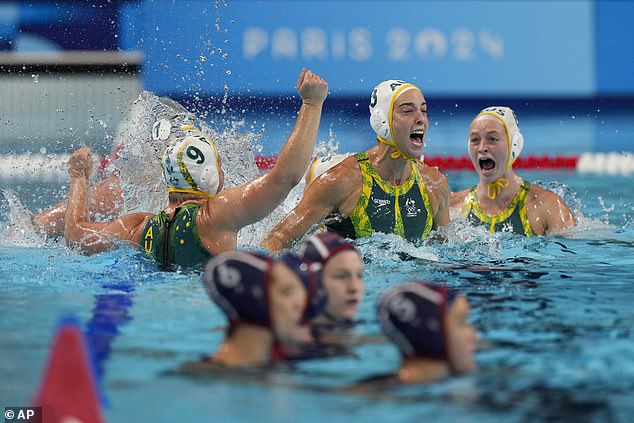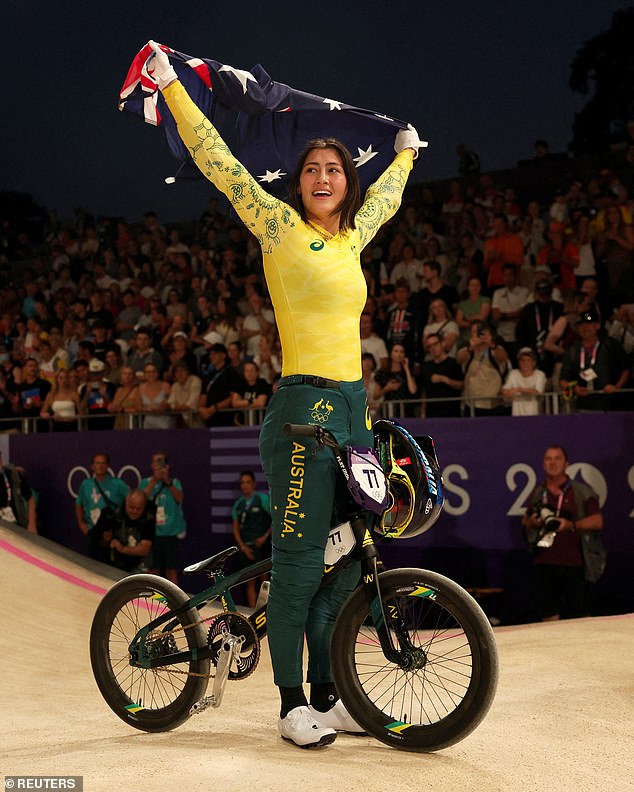As the Paris 2024 Olympic Games draw to a close, Daily Mail Australia reflects on the incredible performances of more than 10,000 athletes who competed over the 16 days of action.
These are Olympics that have seen the debut of breaking while surfing and skateboarding return for their second Games along with sport climbing and 3×3 basketball.
But while some things have been new at the Paris Games, some traditional rules remain the same.
Amidst the excitement and fierce competition, athletes had to abide by some peculiar rules that may surprise you. Here’s a rundown of the most bizarre, draconian, weird, and downright unusual rules of the Olympics:
Boxers must be clean shaven
Boxers must be clean-shaven or have very little facial hair to ensure cuts and injuries are easily visible for immediate medical attention and to reduce the risk of abrasions. However, thin moustaches are permitted. This contradicts the ban by the International Boxing Association, which lifted its ban on beards in 2023 after several religious groups campaigned to change the rules.
Gymnasts are not allowed to wear brightly colored nail polish.
Although gymnasts are allowed to wear colorful makeup, they are not allowed to wear brightly colored nail polish. They must wear neutral shades or no polish at all to ensure that judges can see the natural color of their nails, which can indicate a gymnast’s health and circulation.
BMX riders must wear their shirts tucked in.
Australia’s Saya Sakakibara complied with the IOC dress code to win gold for Australia in BMX
To prevent clothing from getting caught in the bike’s moving parts and to improve safety, BMX athletes must wear their jersey tucked into their pants, even if it matches the shorts. This is becoming almost redundant, as riders like Australian gold medal winner Saya Sakakibara are opting for leggings and full-body suits to increase speed.
Basketball players can’t hold on to the rim
While dunking is allowed in Olympic basketball, players are not allowed to hold onto the hoop after dunking. This rule is in place to prevent injuries and avoid damaging equipment.
World swimming records must be faxed

It’s funny to think that Ariarne Titmus had to use a fax machine to set world records at the Olympics.
This is probably the strangest rule of all. Despite technological advances, swimmers who set world records must fax their records in. This process ensures that the sport’s governing body, FINA, verifies the record before it is officially registered. Most Australians had abandoned faxing long before swimmers like Ariarne Titmus and Kaylee McKeown were born.
Karate competitors must have clean hair
Karate referees have the authority to disqualify an athlete if their hair is deemed not clean enough. Clean hair reduces the risk of transmission of infections and diseases during close contact sparring. This is likely because karate made its long-awaited Olympic debut at Tokyo 2020 during Covid protocols. It was cancelled for Paris but is expected to return in the future.
Riders must remain silent
At the 1932 Olympics, Swedish rider Bertil Sandström was penalised and relegated to last place for clicking his tongue. He claimed it was due to his mount and not an attempt to control his horse. The IOC is also very strict when it comes to the proper treatment of horses in the run-up to the Olympics. Recently, former gold medal winner Charlotte Dujardin withdrew from the Paris Games after a video emerged of her repeatedly whipping a horse.
Groin grabbing is not allowed in water polo

Water polo is a tough sport underwater, so rules have been established to avoid low blows.
Although water polo is a physically demanding sport, excessive use of force, including groin grabbing, is strictly prohibited. The Australian Stingers, who will contest the gold medal on Saturday night, even wear suits that are up to three times smaller than they should be to prevent opponents from tearing them.
Beach volleyball uniforms are decided by a coin toss
If beach volleyball teams arrive in identical colours, a coin is tossed to determine which team must change uniforms. However, the tiny bikinis, which under IOC rules could not be more than 7cm long, were abolished and competitors were allowed to wear leggings and tops instead. Egyptian athletes even competed in hijabs, although French competitors were banned from wearing traditional muslin headdresses.
Cyclist socks cannot extend beyond mid-calf
In Olympic cycling, socks cannot extend beyond mid-calf and are subject to measurements. This rule ensures fair competition and aerodynamic consistency, as longer socks could provide an aerodynamic advantage by reducing drag.
Wrestlers must wear a handkerchief
Olympic wrestlers are required to wear a bandana, known as a “blood drag,” somewhere on their uniform. It is used to wipe away any bleeding during competition.
Water polo players’ toenails are checked
To avoid scratches underwater, water polo players must have their toenails trimmed before competition. It’s easy to land low blows underwater, so officials will check fingernails and toenails to make sure they don’t have barbs that could be used as a weapon.


